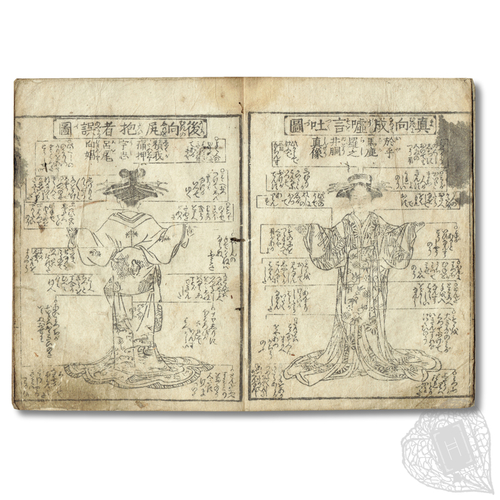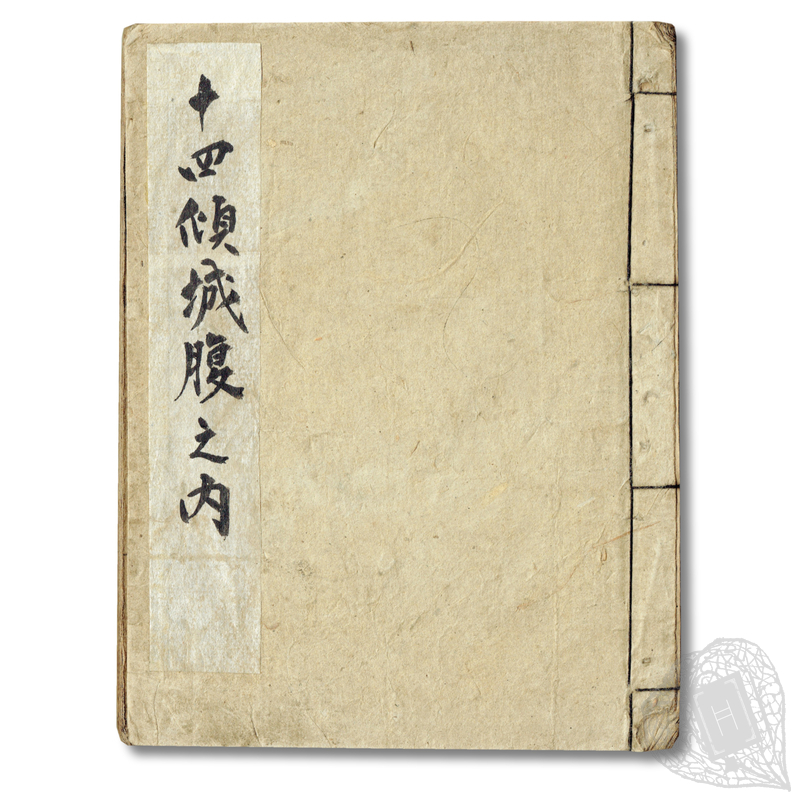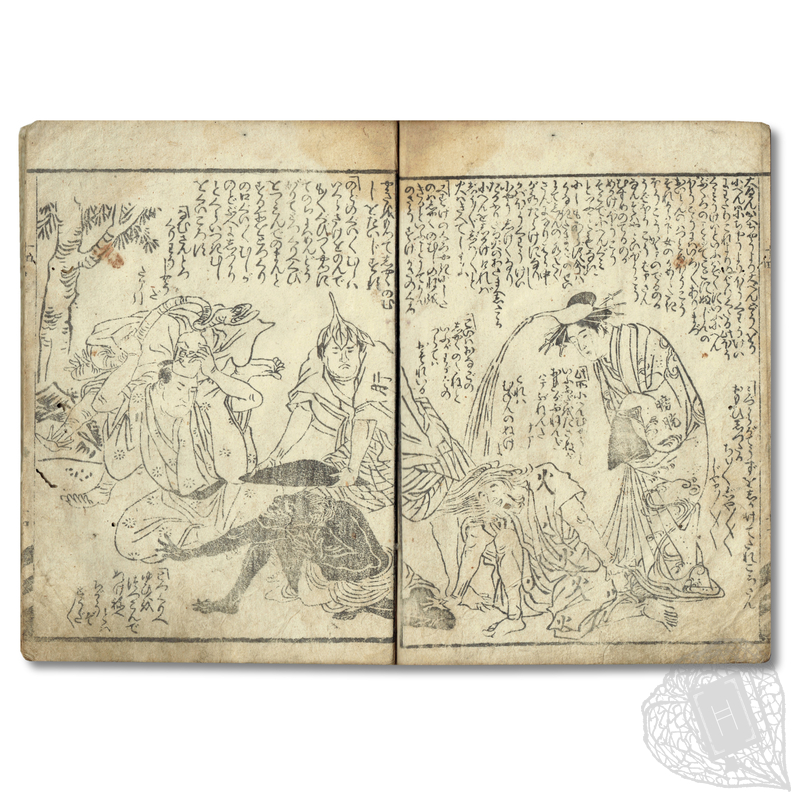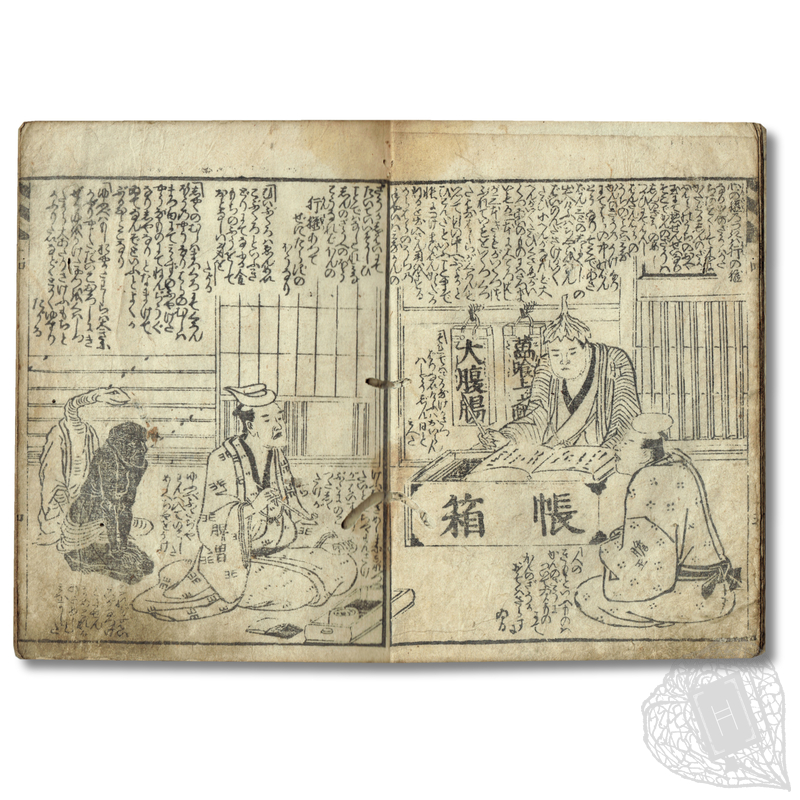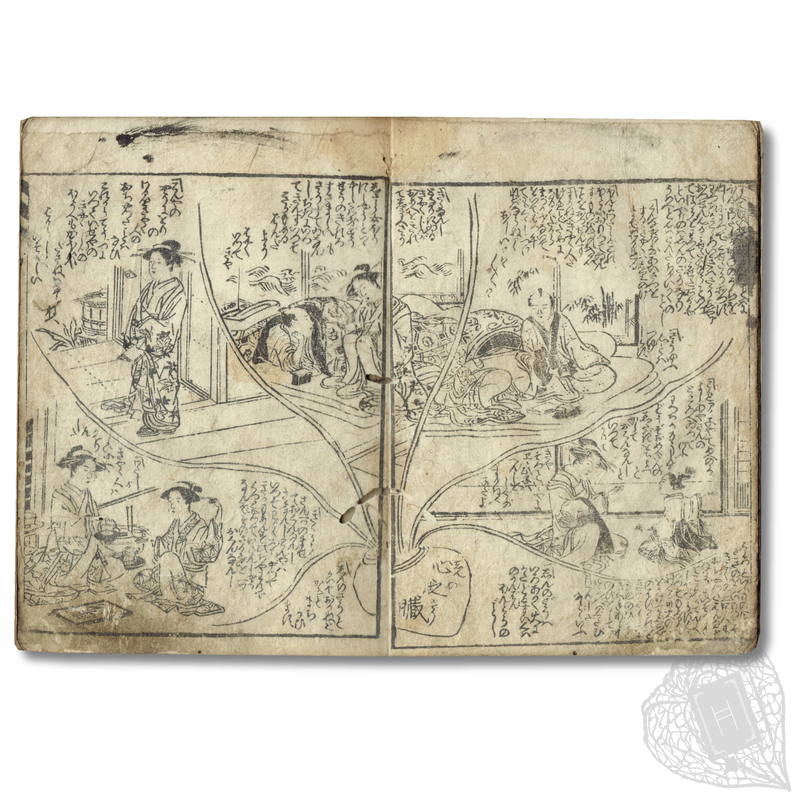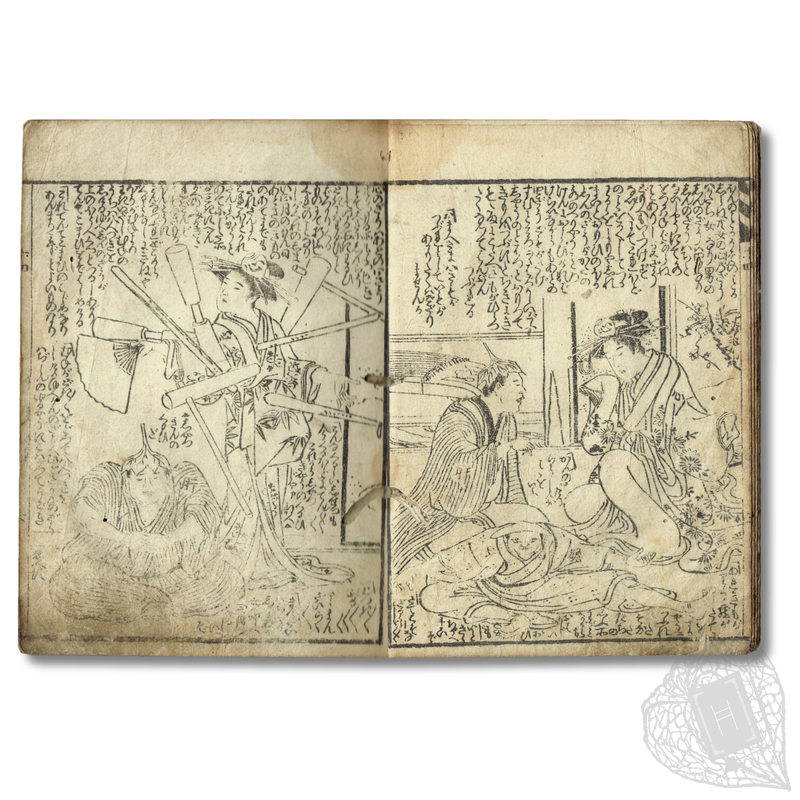Classic Illustrated Books Modern Art and Design Books Translations of Western Texts Japanese Literature Prints and Ephemera Western Books Photo Books Paintings & Scrolls Australia & New Zealand Others
Australia New Zealand Antarctica Japan Korea China Other
Edo Period [1603-1853] Bakumatsu Period [1853-1868] Meiji Period [1868-1912] Taishō Period [1912-1926] Shōwa Period [1926-1989]
Share this book on...

Jūshi Keisei Hara-no-uchi (Inside the Guts of Fourteen Bombshell Beauties)
| US$3,680.00 |  ENQUIRE ENQUIRE |
 BUY BUY |
Jūshi Keisei Hara-no-uchi ["Inside the Guts of Fourteen Bombshell Beauties"]
Shiba, Zenkō [text by]; [Kitao, Shigemasa (illustrated by)].
[Tōri Abura-chō (Edo): Senkakudō, Kansei 5 (1793)].
A scarce medical-themed kibyōshi with eye-catching illustrations by Kitao Shigemasa. The description below of the work is provided by Hisa Kuriyama in Comparative Guts: Exploring the Inside of the Body Through Time and Space (2024, p. 71):
"The economic society of early modern Japan not only shaped ways of seeing and touching the guts, but also transformed the imagination of their contents. The title of this work of popular fiction parodies the Jūshi kei hakki (十四経発揮), a famous Chinese treatise on acupuncture. Its main characters are the wuzang liufu [the five viscera and six bowels], but these viscera are no longer nodes in the cosmic schemes of yin and yang and the five phases; nor are they associated with Daoist divinities. They have, instead, become personified as merchants. Here, the liver, gallbladder, and stomach cluster around the defining activity of commercial life: the inspection of the ledger. Meanwhile, the black and white figures seated on the left represent the one notable echo of Chinese religious beliefs: they are mushi 虫, insect-spirits, whom contemporary Japanese blamed for sudden pains and unruly passions."
The English translation of the title in the description above is taken from Births and Rebirths in Japanese Art: Essays Celebrating the Inauguration of the Sainsbury Institute for the Study of Japanese Arts and Cultures by Nicole Coolidge Rousmaniere, who includes a description of the "anatomical parody" on page 110 of the same work.
One four-hole-bound (yotsumetoji) volume, complete, on double leaves, traditional East Asian binding style
(fukurotoji). Non-original wrappers, ex-ownership inscription to upper wrapper verso. Thumbing, a few stains and ink marks, and occasional wormholes internally. Faint sticker residue to upper margin of last page. 15 leaves. 16.8 x 12.9 cm.
# 250412-2


• Ask a question about this item >
Classic Illustrated Books Modern Art and Design Books Translations of Western Texts Japanese Literature Prints and Ephemera Western Books Photo Books Paintings & Scrolls Australia & New Zealand Others
Australia New Zealand Antarctica Japan Korea China Other
Edo Period [1603-1853] Bakumatsu Period [1853-1868] Meiji Period [1868-1912] Taishō Period [1912-1926] Shōwa Period [1926-1989]
Share this book on...




